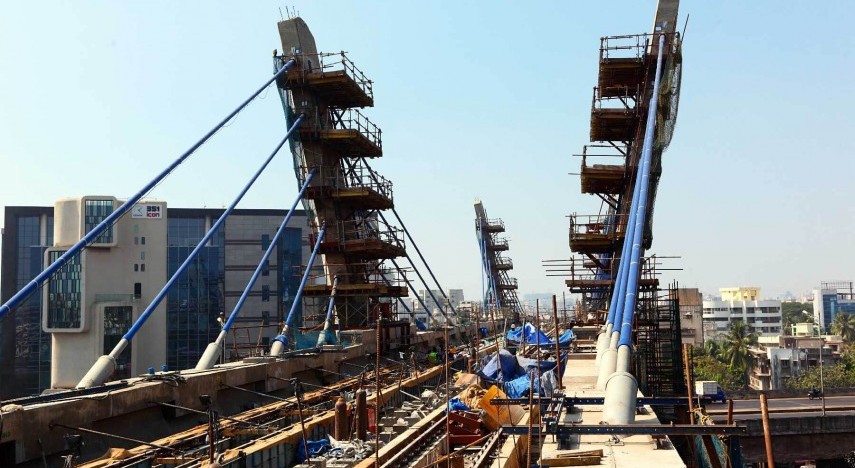All You Need To Know About Mumbai Metro Line III

The Mumbai Metro Line III has garnered concerns over the feasibility of an underground route in an island city which is prone to severe flooding during the monsoons. However, steering clear of any major hurdles, the progress of this upcoming metro link is giving hopes to many anxious commuters of Mumbai as around two kilometres is already developed.
Line III is a fully underground corridor from Colaba in south Mumbai to Seepz in the north via Bandra. It was initially slated to be operational by June 2021 but has received a new deadline of December 2021. The reason for the delay has been attributed to conflicts between the Mumbai Metro Rail Corporation Ltd (MMRCL) and the National Green Tribunal (NGT) over the removal of 3,000 trees as well as utility shifting and rehabilitation of project-affected persons which prolonged the development works.
Implemented in phases, the first phase will connect Aarey Milk Colony to the airport and will be thrown open by March 2021 while the second phase from Cuffe Parade will be opened in December. The tunnelling works over a length of 54 km is underway out of which 2,192 meters have been covered.
Here are some facts about the Mumbai Metro Line III:
Length
The corridor extends over a total length of 33.5 kilometres. It houses 27 stations (all underground except one) namely Cuffe Parade, Vidhan Bhavan, Churchgate, Hutatma Chowk, CST Metro, Kalabadevi, Girgaon, Grant Road, Mumbai Central Metro, Mahalaxmi, Science Museum, Acharya Atre Chowk, Worli, Siddhivinayak, Dadar, Sitaladevi, Dharavi, BKC, Vidyanagari, Santacruz, Domestic Airport, Sahar Road, International Airport, Marol Naka, MIDC, SEEPZ and Aarey Depot.
Cost
The completion cost of the project was estimated to be Rs 23,136 crore with contributions from the Centre in the form of equity, subordinate debt and senior term debt and soft loans from Japan International Cooperation Agency (JICA). Cost escalation is likely owing to delays.
Interchange facility
Passengers can access Line 1 from Marol Naka station and Line 2 from Bandra-Kurla Complex. Moreover, access to the Mumbai monorail from Mahalaxmi, the central railway line from Chhatrapati Shivaji Terminus as well as the western line from Churchgate, Mumbai Central and Mahalaxmi is available.
Features
A car shed will be built at Aarey Colony opposite to Seepz. The project is designed to be built 15 to 30 metres underground which becomes vulnerable during heavy rains. Thus, multiple rainwater evacuation pumps will be installed to prevent subway flooding. Additionally, stormwater drains and special rainwater storage tanks (inspired by Tokyo) will also be provided. Among other advanced features, the project will have eight-coach trains running at a speed between 35 kmph to 90 kmph.
Conceptualisation
There have been claims that the Colaba-Seepz metro has a virtual alignment with an underground rapid transit system proposed back in the 1920s and later during the rule of former Prime Minister, Jawaharlal Nehru.
The project will be implemented by the MMRCL, a state level special purpose vehicle (SPV) converted into a joint ownership SPV of the Government of India and the state government, on similar pattern as for the Metro projects in Delhi, Bangalore, Chennai and Kochi. Planned in 2009, the construction works for the route began after the centre gave clearance in 2013.
Real Estate impact
As the upcoming link would benefit daily commuters and save fuel to the tune of 2.43 litres by 2021 - as projected by the MMRCL, the stage will also be set for new real estate developments. As much as six Central Business Districts (CBD) will see improved connectivity through a Metro route. These include the high-end lanes of Cuffe Parade and Colaba, the Maharashtra Industrial Development Corporation (MIDC), industries in Worli, the bustling Bandra-Kurla Complex and the Santacruz Electronics Export Processing Zone. Not just easy commuting and a rise in demand for commercial properties, the proposed infrastructure will attract more employment opportunities too on the way.
The residential property markets along the route are also expected to witness a positive change as the residents will have access to a new mode of public transportation. Also, with some big-ticket properties in south Mumbai localities like Worli and Santacruz becoming costlier, buyers will soon be able to find relatively affordable options in emerging markets that were once unexplored.
